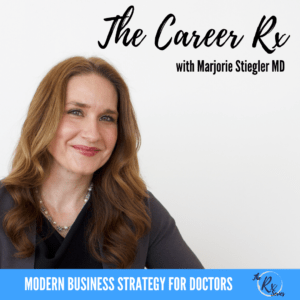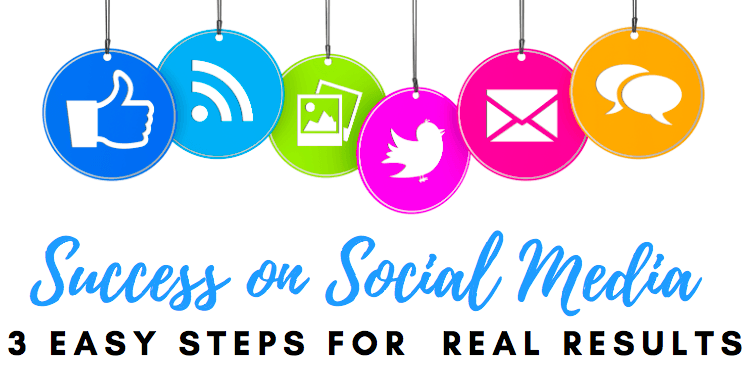Today we are talking about LinkedIn for doctors. I’ll be providing some helpful tips to up your game on LinkedIn and leverage the platform for its many benefits.
In This Episode of The Career Rx We’ll Discuss:
How to use LinkedIn for doctors with tips to build a success profile. This includes:
- Having a professional LinkedIn profile picture.
- Optimizing your profile headline to increase your reach across the platform.
- Creative ways to refresh your ‘about’ summary.
- How you can be open to work with recruiters and keep this feature private.
- Using skills and endorsements to build credibility and create new networking opportunities.
LISTEN TO THIS EPISODE:
SUBSCRIBE TO THE CAREER RX PODCAST:
Want to get access to the latest podcast? Subscribe on your preferred podcast player…
Apple Podcast | Google Podcast | Spotify | TuneIn + Alexa | iHeart Radio
TRANSCRIPT AND SHOW NOTES (How To Use LinkedIn for Doctors: 5 Tips for Success)
For whatever reason physicians and other healthcare professionals don't seem to use LinkedIn very effectively, at least not within academics and clinical practices.
In other areas of the healthcare industry, LinkedIn is much more central to their daily use.
So, there are a lot of lessons we can learn from other healthcare professionals and people in the business of healthcare to understand what we can really do with LinkedIn, to grow our networks and open the doors of many possibilities.
This is one of the reasons that LinkedIn is featured so heavily in the Industry Insider course, as well as in both The Speaking Rx and The Branding Rx courses in the sections that are about attracting the professional opportunities you really want!
So, let's dig into how to use LinkedIn for doctors!
How To Use LinkedIn for Doctors: 5 Tips to Set Up a Successful Profile
1. Have a Professional LinkedIn Profile Picture
The first thing you need for a successful profile (that gets you noticed) is to have a professional LinkedIn profile picture.
Many people don't get professional headshots done on a regular basis, so yours might be out of date. You may have a headshot that’s not really professional or aesthetically appealing, which may not be the best way to represent yourself.
Some people even have a regular snapshot that they've cropped other people out of and while you might look great, it's not a professional photo.
It’s therefore really important to take a few minutes to evaluate your current LinkedIn picture.
- Is it recent?
- Is it flattering?
- Most importantly, is it professional looking?
After asking yourself these questions, if you feel you don't have a great professional headshot, you can get one from a local photographer or even a local department store. It's really not expensive and well worth the investment.
To be clear, you don’t need some kind of artistic magazine-cover photo or a glamour shot. You just need a simple, clean, headshot. The photo itself isn't going to open many doors, but a poor quality or unprofessional image will close doors quickly!
2. Optimize Your Profile Headline
The second step is to create a successful LinkedIn profile is to pay some attention to your headline.
Many people use their formal job titles in their headlines, and I think this is a mistake.
This is really very limiting.
Here’s What to Consider For Your Headline:
Only the first few characters of the headline show up when you're active on LinkedIn, when you leave a comment or engage. So, it's only that first part of the headline that really catches most people's attention.
It's important to pay attention to that because, for many people, their job titles (especially in academics, or clinical medicine) are very long. So, it's not all going to show in those first few characters.
Also, using your current job title can be very limiting. Doing this doesn't open doors for what you want to do next. It only says who you are today.
The copy you use in your LinkedIn headline can include:
- Who you are. Who you are from that professional brand language that you'll be using to describe your credentials.
- Your experiences.
- Perhaps what you're doing currently, if you're happy with that.
- Business goals – focusing on what you want to do next.
- Noteworthy accomplishments.
- A highly sought after skill.
So, take a look at your headline and try to avoid only using your job title.
Instead, think about how you might describe yourself as being a competent professional in a specific type of industry, making a specific type of contribution.
I'm not suggesting that you get clever or cute or use a bunch of jargon or buzzwords, but I am suggesting that you may want to deviate from your actual job title. This may not be as effective as more of a description of who you are, perhaps using that first sentence of your elevator pitch.
3. Refresh Your LinkedIn ‘About’ Summary
Your LinkedIn summary should be a story if at all possible. This is especially true for people who have a variety of professional experiences in their work history.
If you’ve taken a detoured path in your career, or you have a lot of added value experiences in your professional history that many others do not, sharing this in a story will be unique and set you apart.
When using LinkedIn to leverage your next career move, it's important to weave that summary of your professional experiences to paint a picture of how that's relevant to what you want to do next.
This will help a prospective hiring manager or recruiter connect the dots to see how your past experience has led you to be highly effective in a future role. They can get a clear sense of your strong attributes, so they recognize your value.
LinkedIn for Doctors: Summary Tip – Write the about section (the summary) in the first person.
It can look very stuffy and strange to write in your LinkedIn profile in the third person as if you are writing a Wikipedia page for yourself.
With Your Linked In ‘About' Summary It’s more important to:
- Be personal.
- Share the narrative of your perspective, your experience, your work history, your education.
- Share the different places you've lived in.
Communicating your unique value adds that not everybody in your role has. This is what really sets you apart.
This will help prospects get a real sense for you, your talents and to learn more about your personality.
4. Turn on the ‘Open to Work with Recruiters’ Feature
Many people don't do this. In fact, they may deliberately shy away from this LinkedIn feature.
I'm going to ask you to rethink this if you're one of them.
I want you to consider the benefits of turning on the feature that you're ‘open to work with recruiters’.
Here’s how you can set up this feature:
- Go to your account settings & privacy.
- Click on ‘privacy’.
- Scroll down to the ‘job seeking preferences’ section.
- In the ‘let recruiters know you’re open to opportunities’ section, ensure that it says ‘yes’.
It's important to let recruiters see your information and also see that you have specific career interests.
You can say that you're open to a new role or that you're actively seeking a new role.
You can identify the fields, the experience level, plus there are some other privacy settings you can customize.
Of course, LinkedIn can’t guarantee complete privacy from your current employer or colleagues. However, they can keep this feature within the recruiter community and recruiters, not at your current organization.
By the way, everyone knows that you should be planning for future career advancement. So I don't think it's a negative if your colleagues and bosses see that you’re open to hearing from recruiters.
If you’re not sure about this, listen to last week’s episode about how to get the career you really want. We talk in more detail about who you should tell and why.
Why would you not be open to a great opportunity?!
A lot of physicians are a little put off by recruiters and perhaps this is because you're being recruited for things that are not aligned with what you want to do.
Recruiters approach me all the time for locum tenens (temporary or traveling physician jobs) positions, for example, and that's not what I want to do.
So I'm not talking about recruiters in that sense. What I am referring to are recruiters who are essentially professional matchmakers.
A recruiters professional purpose is to match highly qualified candidates (who want specific job opportunities) with companies who want specific professionals.
Therefore if you can get clear on what you'd like to do next, a recruiter is a really great way to help you get there and get there quickly.
So, open the door to recruiters, be receptive, talk to them, get to know them and let them help you grow your network.
A recruiter might not lead you to an opportunity right away, but by building a relationship with them helps you when an amazing opportunity does come up. An opportunity that is right for you.
5. Ensure The Skills Section of Your LinkedIn Profile is Up to Date
Make sure your “skills” section is turned on and that you have identified some key skills.
This is especially important if you're actively looking for a new career opportunity.
If you’re looking to make a career change, be sure that the skills you have turned on are transferable. Add what you have done well in the past and communicate what you might want to be doing in the future.
The search engine within LinkedIn will use the skills and the words in your headline summary and match you up with recruiters.
In order for you to be found for the right opportunities (in search) you've got to use the right words in your profile, and skills section.
LinkedIn for Doctors Tip: Leverage Endorsements in the Skills Section
One of the most effective strategies to really up your game on LinkedIn is to leverage endorsements.
Endorsements can be seen in the skills section of everyone’s profile.
You can leave a few genuine skill endorsements for one of your connections (assuming they have the skills section enabled in their profile).
Leaving endorsements does a few positive things…
- It can strengthen relationships. It’s a quick and easy way to stay in touch, without a lot of effort with some of your connections. This can work well for folks you may not speak to every quarter or year but who are in your professional network. This is a great opportunity to build and strengthen those looser relationships.
- Create new networking opportunities. Once you endorse someone for their skills it can trigger a reunion conversation. They'll see that you've endorsed them, and perhaps write you for a quick catch up. So this can be very helpful for networking.
- Increase reciprocated endorsements. The people you endorsed are much more likely to endorse you as well. This directly helps grow your credibility.
How To Use LinkedIn for Doctors: Recap
- Ensure your LinkedIn profile picture is professional looking.
- Optimize your headline to communicate your strong attributes, skills and what you might be looking to achieve.
- Create a first-person storytelling summary in the about section showcasing your unique qualities and experience that set you apart.
- Be open to recruiters for future career opportunities.
- Ensure your skills are turned on and appropriately curated, so they're selected to showcase your skills that are transferable. Plus, grow your endorsements for your own skills by endorsing others.
These are some really great ways to liven up your LinkedIn profile and make it a much more effective living, breathing and active networking tool.
Hop online right now and take a look at your LinkedIn profile. Make a few of these changes and drop me a note and let me know how it goes.
While you’re at it, let’s connect on LinkedIn – please add a note in your connection request that you’re a Career Rx listener!
–
Thanks for joining me on this episode of The Career Rx!
Please be sure to subscribe and leave me a review on Apple Podcast, Google Podcast or whatever podcast player you're using to listen today. Also, be sure to send me your questions so I can answer them and give you a shout out on a future episode.
Bye for now,
Marjorie
Related Social Media Articles for Doctors:









